
Sorry, kind readers. I know this is later than mail by pony express. But I’ve been having some health problems (nothing fatal) that slowed down my production. Nevertheless I’m sending French and Wimbedon resumes in the hope that you may enjoy looking back. Thank you for your patience.
SAY IT AIN’T SO, JUSTINE !
PARIS – How dare she? How could she?
Women have walked out on me, but this was different. For this one I was prepared to spend the next five years admiring her moves and touch, the way she controlled herself and spiky situations, ever up against overpowering foes.
She said it was nothing personal. Everybody else was being left behind, too. Such a passion had flamed within her tininess that it seemed she must need asbestos clothing.
My romance, from the distance of pressbox to tennis court, was over abruptly, and the French Open would have to stir up a successor to Justine Henin, who had four championships in her purse, the last three in succession. It was a mad scramble among at least seven pretenders, headed by the Siberian Siren, Maria Sharapova, the reigning Australian champ.

With Henin wandered off plus the Fall of the House of Williams (Serena and Venus both leaving leaving unimpressively), was almost any babe’s ballgame.
Paris without “Juju,” as her mob of adorers call Henin, is something like boxing was minus Rocky Marciano, the Brockton (Mass.) bruiser. Rocky called it a career in 1956 at the top of his game as Justine was. Rocky, unbeaten, was No. 1 while associating with heavyweights, and so was she, the dauntless paperweight surrounded by lofty sluggers. With quickness, guile, heart and a knockout backhand, Justine more than survived. She was the complete player, using the entire rectangle and every stroke.
At 5-5, 120, she outpointed the heavies of her profession. But it took such intensive labor to do it that she’d had enough, the only No. 1 ever to flee for good – and break so many hearts in departure, just turned 26.
Seven majors are hers (two U.S. and an Aussie alongside the French quartet). She will likely stop by Newport, R.I., to be anointed for the International Tennis Hall of Fame in 2013.
“The things I wanted to prove, I did it,” she says. “I need to do something else. I’m not tall, not strong, not as much as other players. So I had to fight to prove a little girl, a little woman could make it.
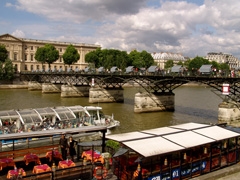
“I don’t need this adrenaline being in front of thousands of people to be happy.”
She’s a lucky athlete if that’s true.
AND WE LOSE GUGA, TOO
Another champion’s farewell, this on court at Stade Roland Garros, was that of the ebullient Brazilian, Gustavo “Guga” Kuerten. Though gimpy hips removed him as a factor some time ago, he took a wild card for the last match of a brilliant career, losing to Paul-Henri Mathieu, respectably, 6-3, 6-4, 6-2.
He had emerged as an unknown, unseeded, No. 66, to win in 1997, repeating in 2000 (when he was No. 1) and 2001. Built like a mop, he captivated crowds with his easy-going manner, and, like Henin, a staggering one-handed backhand.
Also like Justine, he said, “I had my time, too. I really been intense for the time I was around” [it didn’t show]” and I’m not going to have it anymore. I’m not going to miss that much. I feel I had my job done, and maybe I find another way to feel as happy as I was playing tennis.”
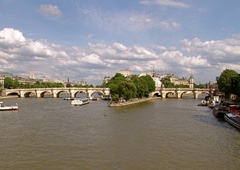
I hope so. He spread the joy around. Remember how he drew a heart on the central court to express his love for the fans?
ROLAND GARROS PLAYPEN TURNS 80
Significant anniversaries were touted in this precinct: the 80th of Stade Roland Garros; the 40th of the initial major “open” – integrating amateurs and pros. The French dug up some prize money, nothing in the same hemisphere of the $ 1.6 million handout to the male and female champs.
In 1968 Kenny Rosewall, the diminutive, yet damaging Aussie – the champ as an amateur in 1953 – returned in his 12th year as a pro to earn $ 3000 for beating compatriot Rod Laver in the final, 6-3, 6-1, 2-6, 6-2. In 1953 he beat American Davis Cupper Vic Seixas, 6-1, 6-4, 1-6, 6-2.
Alas for Texan Nancy Richey, she was hesitant to turn pro – many were at that point – and thus became the lone amateur woman to win a post-1967 major. Her victim, English lefty, Ann Jones, a pro, was awarded the $ 1000 first prize. Nancy won, 5-7, 6-4, 6-1, and still regrets missing out on the money.
WHO WAS ROLAND GARROS?

The only player I’ve met who could identify Roland Garros was Martina Navratilova, though there may be others. A noted aviator in the formative days of flight, Garros was the first to fly across the Mediterranean from France, taking about eight hours. Later, in World War I, he had the idea of mounting a machine gun on his plane, shooting down five German planes, becoming the war’s first ace.
However, he, too, was shot down fatally, his heroic name chosen for the new tennis complex in the Bois de Boulogne in 1928.
It was built primarily as a site for the French defense of the Davis Cup, lifted from the U.S. in 1927. French authorities had borrowed heavily for the construction, figuring on sell-outs because everybody wanted to see the great American, Big Bill Tilden, who had led the U.S. to a record 7 straight Cups.
Panic struck the French when Tilden, ever at odds with the U.S. Tennis Assn., was suspended for violation of a silly amateur rule. Ticket sales stopped. The French team – the Musketeers Rene Lacoste, Jean Borotra, Henri Cochet, Toto Brugnon — wanted only to play only against the best, “Beeg Beell,” and threatened to walk. The Cup tradition, merely 27-years-old at the time, was in danger.
A man named Myron T. Herrick popped up as the star. A popular U.S. ambassador to France, he contacted the State Department, insisting pressure be applied to the USTA to reinstate Tilden. It worked. “Beeg Beel” did play and almost everybody was happy. The French retained the Cup, despiteTilden’s victory over Lacoste (he of later Crocodile shirt-creating fame), and the Stade was paid for.

I wish there were a diplomat around who could talk Justine Henin into reinstating herself. Otherwise she’s the leader among women who ambled out of my life.
FREAK SHOW? NO, JUST A TALL TIME
If the flamboyant American impresario P.T. Barnum were yet around, and operating a sideshow tent at the French Open, he undoubtedly would have been hawking “the world’s biggest tennis match!
“Step right up, ladies and gentlemen, and see these young giants who somehow eluded the basketball procurers, and are showing the Eiffel influence in a rare display of tennis. Please do not antagonize these creatures because the arena is intimate and they could take a swing at you with their powerful rackets.”
Barnum, who spoke of his customers endearingly — “a sucker is born every minute” — would be right about the intimacy of revered Court 1 at Roland Garros, an enlarged closet called the bull ring, where you feel part of the match.
But “the world’s biggest collision”? Maybe. On one side were the womb-mates, twins Mike and Bob Bryan, U.S. Davis Cup regulars for seven years, and the best known of the virtual unknowns – a Foreign Legion in sneakers — who populate the nether region of the game called doubles. Often doubles is better to watch than singles, more imaginative, a nest of rapid-firing volleying, an anti-dote to the grinding baselining of the singles on the bronze-toned Parisian clay.
“But,” Bob Bryan said, “the singles guys are the stars. We recognize that. They’re on TV; we aren’t.” Not enough. But when Boston’s WGBH pioneered TV tennis coverage in the 1960s it was all doubles: the U.S. Championships at Boston’s Longwood Cricket Club when doubles and singles championships were separate, the latter at Forest Hills, New York. Doubles alone was well received, illuminated on TV by such teams as Americans Chuck McKinley-Dennis Ralston, Mexicans Rafe Osuna-Tonio Palafox, Aussies Roy Emerson-Fred Stolle.
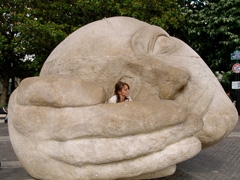
Anyway, the Bryans aren’t exactly overtowering: lefty Bob 6-5, Mike 6-4. Across the net though were two other Americans, Jonathan Isner, 6-10, and Sam Querrey, 6-6. That’s a lot of highboys in one rectangular patch of dirt.
Bob and Mike have been a team since bassinet days. Jonathan and Sam are giving it a try, and looked decent, losing, 7-6 (7-5), 6-2, in a swirl of eyeball-to-eyeball reflex volleying, poaching and interceptions.
“How do you lob over a team like that,” smiled Mike, although he did sky one above Querrey for a winner.
“Best shot of my life!” shouted Bob after nearly landing in the first row, angling a backhand winner on a ball almost bouncing a second time. The brothers were having fun, along with an appreciative gallery.
Also U.S. Davis Cup Capt Patrick McEnroe, an especially interested spectator. Just turned 30, sure bets for the Hall of Fame, the brothers look as though could cohabit a court handsomely for another decade.
“I’m looking at the big picture,” said McEnroe, and he certainly was. But he meant the future — “If Querrey and Isner stay together, they might get the Cup job someday.”
“With those big guys, the way to play,” Mike said, “is make ‘em bend. Give them low balls as much as you can.” Good advice, which the brothers followed as they strode to the quarter-finals in search of their second French title, only to be thwarted by the eventual winners, Pablo Cuevas (URU) and Luis Horna (PER). As the only American male team to capture all four majors, the Bryans also hold two Australian, one Wimbledon and one US, and have stood as world No. 1 four of the last five years.
Somebody asked, “How many titles do you guys have?” Answering practically in unison (the way they play): “Forty-seven. We’re behind the Woodies’ 61 [Aussies Mark Woodforde and Todd Woodbridge] for the open era [post 1967] record.
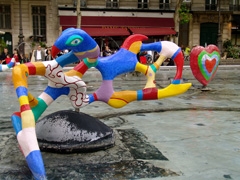
Mike said, “Roger Federer is always asking us how many we have, and can we name them. Hard to do that. The first was Memphis, 2001. Then we ask him about his. It’s 54 singles titles, and Roger can reel them off – in order. Really. Is that amazing?”
Like most doubles teams, they flash hand signals at each other to indicate who’s moving where. This isn’t the NFL, but is signal-stealing prevalent?
“Oh, sure,” Bob said. “Opposing coaches will try to pick them, and send signals to their guys, but reacting quickly on the court is pretty difficult.”
A bumpy start to this season these two Florida residents attribute to letting down after finally winning the Davis Cup at the end of last year. “But we’re OK now,” Mike said. “The cure? We went home. Dad [coach Wayne Bryan] took us right back to the basics, and straightened out our games. Mom’s home cooking was just what we needed after all that restaurant time on the road.”
Re-fitted, the kids from Camarillo, California, reappeared to win Key Biscayne, Barcelona and the Italian Open. Living in the game’s shadowland, accepting that the singles players get the bulk of acclaim and cash, they aren’t volleying vagrants. Bob and Mike have won more than $ 5 million apiece in career prize money. Doubles players may fly coach, but they don’t starve.
While P.T. Barnum would have admired the Bryan’s teamwork, it doesn’t come close to the togetherness of one of his prized attractions: Cheng and Eng, the Siamese Twins.
ONLY NADAL IS SAFE IN TINY RAFALAND
If Rafa could hang out on his own private island – Rafaland — for a few weeks longer it might be very pleasant. Relaxing. Plenty of fresh air, although no sunshine this year. Just clouds in varying shades, mauve and gray predominating, a lot of rain and temperatures dipping into the 50s. Bring a parka was the advice to folks wanting to spend the men’s semifinals at Rafaland peering at the resident beast, Rafa himself.
Rafa is, of course, the fearsome Rafael Nadal, who speaks softly and carries a big stick which he uses to discourage trespassers at his tiny kingdom within Paris. Nobody has gotten past that slugging mace or the determined Spanish face behind it.

“I think I can lose every time I go on this court,” Nadal says modestly after progressing to his fourth successive French Open final by breaking down the slick Serb, Novak Djokovic, 6-4, 6-2, 7-6 (7-3). But he hasn’t. “Well, this is a special court for me, no? Unbelievable memory from the court, a special feeling. Is emotional for me every year when I come back here.”
Rafaland is no larger than a few thousand square feet, seemingly useless real estate of gritty crimson soil sequestered on the west side of town. Fitting into a huge city, it could be compared to the Papal State in Rome. And it is here that Raffa has been more infallible than any Pope: 28-0 when he’s been tested. But he may stay only two weeks before the proprietor, the French Federation of Tennis, hands even the powerful Rafa an eviction notice, with the hope, “See you next year, Champ.”
But to be the boss again and singularly grasp the French Championship, he had to whack No. 1 Roger Federer in a third consecutive Spain-Switzerland title bout. Long after Rafa had showered and departed, Federer was delighting the 14,845 semis witnesses filling the seats by giving an un-Federeresque performance of uncertain shotmaking in having to fight off a rare Frenchman in the semis. That was the spindly daredevil, No. 59, Gael Monfils, who hit the dirt often, but also enough good shots to keep the crowd in a happy uproar. Gael, the first French passport-holding semifinalist since Sebastien Grosjean in 2001, had won merely five matches this season prior to taking five in this, his best ever major. But, living up to his nickname, “Slider Man,” he kept Federer laboring for 3 hours-4 minutes, falling a last time at twilight after squelching two match points, 6-2, 5-7, 6-3, 7-5.
An interested spectator, the last to win 28 straight matches in Paris, was the now silver-haired Swede, Bjorn Borg. His string ran from 1978 through 1981, and he also won in 1974-75. But Bjorn suffered two losses here: both to Italian Adriano Panatta, in 1973 and 1976.
The fact that Rafa has never lost in this major sets him apart from other great male champions. Regardless of how many majors they won, they were beaten, too. Of course the late chirpy Bobby Riggs would have said that he won Wimbledon the only time he entered, 1939. Same for another Yank Ted Schroeder, Wimbledon, 1949.
Nadal, four days past his 22nd birthday, says, “I’m very comfortable here. I’ve always been very calm so far, and I think everything is the same. Nothing’s changed, no? The only thing that has changed is I’m three years older. I’m 22. I’m no longer a young player, a young promising player.
“I’m not a promising player any more,” he flashes than wonderful grin. “Too bad.”
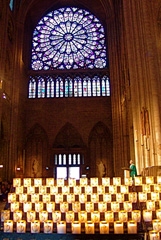
Too bad for the would-be trespassers at Rafaland, where the undistinguished looking earthen playpen suits him just fine. Clay. He has been El Rey of Clay for a long time, and eight out of nine against Federer when they tango on that terra firma.
It took two hours for the brilliant young No. 3 Djokovic to pass the awesome spin-reading exam that Nadal set forth. By that time – trailing, 6-4, 6-2, 3-0 — he was regaining patience, his double-barreled backhand began firing immensely, and he caught up at 5-5 and held a set point at 5-6. But no intruder has won a set in Rafaland this year, and Nadal made sure of that with a ringing crosscourt forehand winner.
Djokovic says, “With him it’s really difficult on this court. A lot of stress mentally and physically out there. People say it’s impossible to beat him here. Well,” Novak smiles wanly, hopefully, “I guess everything is possible.”
Rafa says of the set point-saver, “I didn’t thought to hit a winner before I touch the ball. Just tried to play a tough safe shot.” So he did. The brief danger was past, and he racked the first five points in the tie-breaker to crunch whatever thoughts Australian Open victor Djokovic might have nurtured about making a Grand Slam.
Nevertheless the Serbian Surge remained in the title business. Beauty Ana Ivanovic – newly elevated to No. 1 – went against scrappy No. 13 Dinara Safin to determine a successor to the farewell femme, Justine Henin.
Nadal, looking a bit Cochise in long dark hair and a headband brought a deadly racket rather than tomahawk. His choice of muscle shirt is headband-matching apple green. The khakis – whatever? Knickers? – may be either short chaps or a long loincloth?
But whatever the costume he remained the Squire of Rafaland because Roger Federer was unable to impersonate an earthquake.
.
A SERBIAN QUEEN OF FRANCE: ANA
A short street in Paris, not far from the Eiffel Tower, is named for Pierre King of Serbia. Pretty much a forgotten character from the early 20th century. To catch up with the times, city fathers ought to re-christen the lane Ana of Serbia Queen of France.
Serbia (not suburbia) has become the hottest location in the game called tennis – whether or not you can find the Balkan sliver on the map. Two major championships have occurred thus far in 2008 and Serbia has taken chunks of both: Novak Djokovic the Australian in January, and now Ana Ivanovic the French.
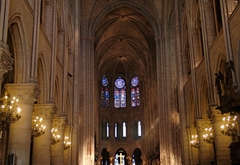
No pluckers of majors had come from Serbia before, but get used to it. [It should be noted that all-timer Monica Seles originated in the the Serbian sector of the bygone Yugoslavia, then developed in the US.]
Not only was the newly crowned queen of France blowing kisses to the throng of 14,845 hailing Ana’s 6-4, 6-3, triumph over Russian Dinara Safina, but the just-abdicated queen was also on hand to extend her blessing. A year ago, Justine Henin, completing a three-year reign at Roland Garros, hadn’t been so cordial. Across the net as the foe, Henin was such a frightening presence that 19-year-old Ivanovic nearly fainted while wobbling through the 6-1, 6-2, splattering.
“People said to me to forget it,” Ana is saying. “But no. These last two losses [she was beaten in this year’s Australian final by Maria Sharapova as well] were great learning experiences for me. It hurted me, but I lost to a great champion [Henin], and I learned a lot from the way she handled herself. It was really thrilling today to have her hand me the trophy.”
While her nerves were firm this time around, her huge forehand exploded for critical winners, and her court sense was admirable, Ana owed much to her victim. Dinara Safin, the 6-foot little sister of Marat Safin, had an adventurous tournament, removing the rest of her countrywomen: Nos. 1-7-4 Sharapova, Elena Dementieva and Svetlana Kuznetsova. Dodging match points against Sharapova and Dementieva – nobody had ever ascended to a major women’s final with such escapes – she “didn’t have any more of that fire that I had in those comebacks. Comebacks always take so much heart and mentally.”
Still, she fought on as ever, despite falling behind early in both sets. The matinee’s wowser was the seventh game of the second, Safina hanging on for dear life through seven deuces, three double faults, two break points to reach 3-4 – but she had nothing left.
Though not as quick as Ivanovic, or quite as sharp in the baseline gunning, No. 14 Dinara scored a landmark achievement. No previous sister and brother had made it to major finals. Marat, of course, conquered U.S. Open in 2000 and the Australian in 2005. Closest were the Texans Nancy and Cliff Richey, also in Paris, she the champ in 1968, he a semifinalist in 1970.
With her victory over Sharapova, Safina courteously opened the door to No. 1 to Ivanovic, an address vacated recently by Henin. Win or lose yesterday, Ana is No. 1 – at least for a while – according to Medusa, the Women’s Tennis Association computer.
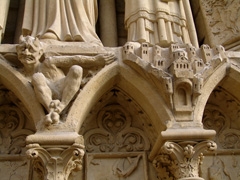
But No. 1 may go back and forth like a tennis ball. To the delight of tournament promoters and player agents seeking endorsements, it may shape up as the duel of the divas – Sharapova and Ivanovic. They contrast in looks and personality, the blonde Russian and the dark-haired Serb, but with plenty of sizzle to go around. Maria has the fortissimo sound effects, Ana the soft, self- goading cry of “Adje!” (come on) in her native tongue, sounding like aye-yeh.
Unspoiled (as yet, anyway), Ana was justifiably jubilant on this “happiest day of my life,” basking in congratulations. Her green eyes were lustrous as she thought of how much her being No. 1 on the planet – the first Serb to stand so high – would mean to her small country. Gone were the tears of her defeats by Henin last year and Sharapova in January.
Where did Ana’s handsome, hammering forehand come from?
“I’ve always had it, since I was five and had my first racket. I just wanted to hit it as hard as I could. My father said I should try to keep it inside the lines, but I wasn’t interested in that for a while.”
She and Dinara have left the seemingly permanent clouds, the chill of a 58 degree afternoon and the dirt patch to No. 1 named Federer and the house ogre named Nadal.
.
FEDERER SOAKED IN REIGN FROM SPAIN
The reign from Spain falls mainly on a plain called Roland Garros.
But it might as well have been acid rain as far as a tennis player named Roger Federer is concerned. Helpless and battered, defenseless on that crimson plain, he seemed a prizefighter awaiting the knockout punch – and you wanted to shout, “Stop the fight!” But it doesn’t work that way in tennis, regardless of the similarities.
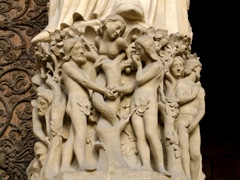
At that juncture the Spaniard whose reign continues in France – El Rey of Clay Rafael Nadal – was belting his way through the man who wears No. 1, 6-1, 2-1, on a fifth break of serve, and the French Open championship clearly was going to be his for a fourth consecutive year.
But for Federer, the brilliant Swiss who has owned the tennis world since 2004, it would get horrifically worse. After merely 1-hour-48 minutes of punishment, Roger – his mistakes mounting along with Rafa’s winners – the man with 12 major titles in the bank, was savaged, 6-1, 6-3, 6-0.
Never had a No. 1 been flattened so thoroughly in a major final. In a way it brought back John McEnroe’s 6-1, 6-1, 6-2, mugging of Jimmy Connors in the 1984 Wimbledon final, though Jimmy was past prime. Only one guy has been manhandled as roughly in the final of this 83-year-old major: American Brian Gottfried, crushed by another lefty, Argentine Guillermo Vilas, 6-0, 6-3, 6-0, in 1977. Roger was last bageled in 1999, by Byron Black at Queen’s, and Pat Rafter here.
Roger wore black as did his lady friend, Mirka Vavrinek. Unintentionally premonitional?
A Swiss journalist, Rene Stauffer (author of Federer’s biography), said, “This means a weekend of mourning at home because the Swiss football [soccer] team lost to the Czech Republic, 1-0.”
For a moment Roger thought he “had a little chance,” and the stunned full-house gathering of 14,845 fast-clapped enthusiastically, hoping to revive him. It was 3-3 and a break point with Nadal serving in the second set. However, the muscle man from Mallorca denied the breaker with a dainty drop shot, concluding a 16 shot exchange. Whereupon it seemed that the Eiffel Tower fell on Federer. Points went by…games went by like cars on the high-speed TGV French trains. The last nine games and a 28th straight triumph on Parisian earth belonged to Nadal.
That equaled the local record set by the Swede, Bjorn Borg, in winning four titles in a row, 1978 – 81. Borg, 52, white-haired and fit, showed up to hand the trophy to Nadal.
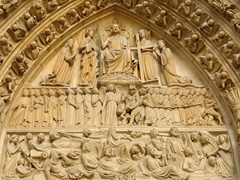
Now the Borg-Nadal comparisons begin. Both defensive paragons of topspin and slick footwork that kept them ever in position to deliver, they overflowed with competitive juices. But Borg, working with a wooden racket and strings that can’t measure up to the current high-tech stuff, couldn’t deliver the torrents of wicked spin that flow from Nadal’s weapon. Still, let’s wait until Rafa wins three more French titles to surpass Borg’s total before declaring him the all-time clay court maestro.
Federer, as you know, has been anointed as the greatest player of all time by many who apparently neglect to include the French as part of the tennis sphere. Roger is zero for 10 in the tournaments staged in Rafaland and otherwise known as the French Open.
Everybody has the proverbial bad day at the office, but for Federer the rectangular, dirt-floored office burned down around him. Nadal was the man with the torch. Lighting fires everywhere, he was seldom out of reach of Federer’s best shots, sending them back in double-digit exchanges to end the points with either his winner or Roger’s error.
“I don’t believe this match,” Rafa said, shaking his head and the long dark tresses. “How do I feel? I still feel like No. 2 that I am. But I never played better. I was aggressive, inside the court.”
Even though receiving 12 feet behind the baseline, he was quick to move up to the line to launch those terrible swirling shots – topspin, slice, sidespin, keeping Roger constantly uncomfortable. He hit one God-awful inside-out forehand that could only be called snaky – wiggling, shimmying, curling just beyond Roger’s racket.
In a sentence, Nadal is better than ever, merely 22, and Federer isn’t, even though nearing only 27. Roger denies decline (only one tournament won this year, a mediocre Lisbon ) – but it began showing at the Australian Open where he lost his title to Novak Djokovic, and was fortunate to beat a lesser Serb, Janko Tipsarevic.
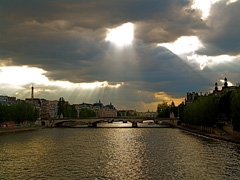
“Rafa is harder to play against,” he said
“The way he played, hardly any unforced errors [7]. He was stronger, getting more aggressive, stronger than me.”
Could you say a match went downhill after one game? I didn’t think so, but Nadal fractured Federer’s serve for openers – and the rest was watching an all-time great struggle with no chance, getting nowhere with whatever he tried.
After two weeks of wet, chilly, overcast weather the sun appeared as Federer blew a volley (one of numerous), and lost the first set. It was a Spanish sun shining on the young reign-maker of the Parisian plain.
.
Leave a Reply